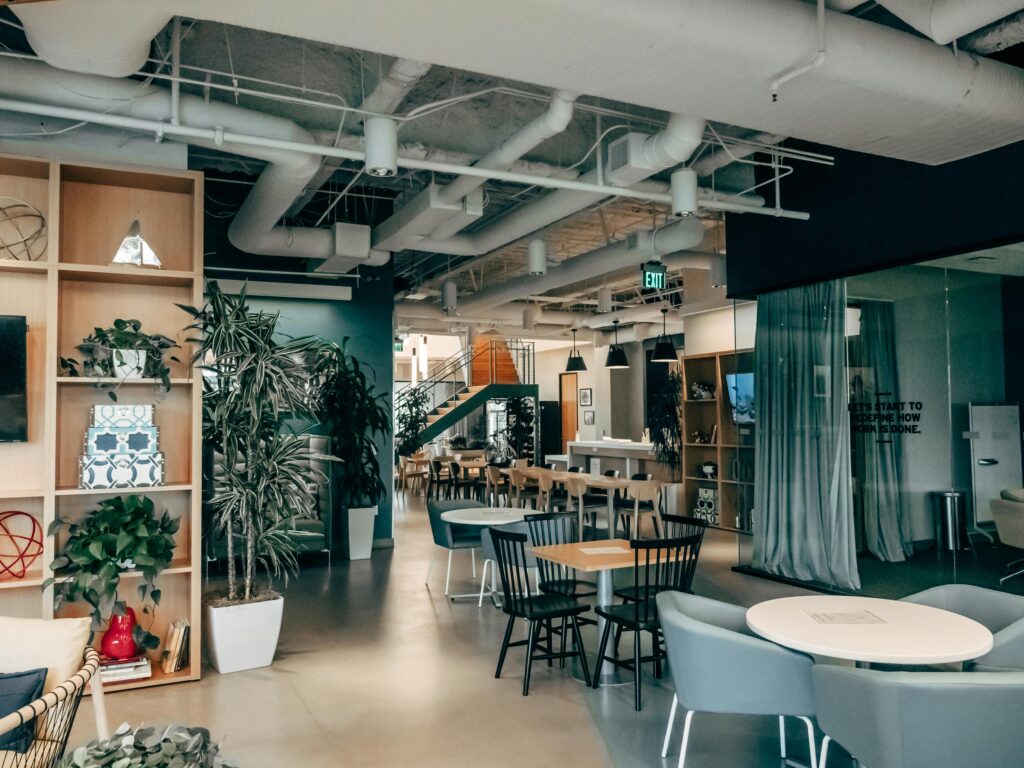Concrete floors, exposed ductwork, and weathered steel may sound more factory than workplace, yet the industrial aesthetic has become a favorite for modern offices seeking character without clutter. By celebrating the building’s bones rather than hiding them beneath drywall and carpet, you create a space that feels both refreshingly contemporary and honest.
Even if your suite sits in a glass tower instead of a converted warehouse, thoughtful material choices and smart detailing can deliver the same utilitarian charm while still supporting productivity and comfort.
Embrace Raw Materials
Start with surfaces that tell a story. Polished concrete or lightly sanded reclaimed wood instantly signals industry, revealing textures that age gracefully instead of wearing out. If your lease forbids floor changes, introduce metal-framed shelving or a statement desk clad in sheet steel to anchor the room.
Keep wall treatments minimal: exposed brick where available, or matte gray paint mixed with a hint of umber to mimic raw cement. The goal is honest materiality—let pipes, conduit, and structural beams stay visible, cleaned but not disguised.
Prioritize Functional Furniture
Furnishings in an industrial office should feel engineered, not ornamental. Choose workstations with powder-coated steel frames, height-adjustable mechanisms, and solid wood tops that develop a patina over time. Pair them with task chairs wrapped in durable leather or mesh rather than plush upholstery.
Storage pieces can pull double duty: mobile tool carts become filing cabinets, while wire lockers corral personal items. Limit decorative accessories to functional objects—a vintage drafting lamp, a machinist’s stool—so each element earns its place through utility as well as aesthetics.
Layer Lighting Like a Warehouse
Lighting is the atmosphere’s secret weapon. Suspend caged pendants over collaborative tables, install swiveling metal sconces at brainstorming nooks, and leave Edison-style bulbs exposed to echo factory floors of decades past. Layer brightness by adding LED strip lights along shelving and dimmable task lamps at every desk—too much overhead glare kills the mood.
Whenever possible, keep window lines unobstructed so daylight washes across textured walls, amplifying contrasts between steel, wood, and concrete. The interplay of warm and cool light keeps the palette lively, never dreary.
Add Finishing Touches with Personal Flair
Finish the story with details that humanize the hardware. Oversized factory clocks, framed blueprint reproductions, and planters in galvanized buckets soften hard edges without breaking the theme. Swap generic plastic organizers for vintage metal bins; toss wool throws over backless benches to add tactile comfort.
A single accent color—safety-orange, signal-yellow, or fire-engine red—used on cable clips or chair casters brings energy without clutter. Finally, subtle branding elements such as custom office signs in brushed aluminum tie identity to the environment, proving that industrial style can still feel personal.
Conclusion
An industrial office doesn’t require a sprawling loft or unlimited budget—only deliberate choices that honor craft and function. When raw materials, purposeful furniture, layered lighting, and thoughtful accents align, the workspace gains character that inspires creativity as reliably as any mural or whimsical beanbag lounge seating.






